Swedish artist Elin Petronella was already hooked on embroidery when she met Charles-Henry in Paris in 2016. He was working as a professional photographer, but with a background in fine arts, he quickly became interested in Elin’s daily embroidery practice.
Elin taught Charles the art of embroidery and, as they became teachers themselves, Charles and Elin set themselves a mission. Recognising the medium’s ability to promote relaxation, put worries aside and offer inner reconnection, they set out to share their passion and skills with as wide an audience as possible.
The Charles and Elin Academy, their online school, focuses not only on the architecture that the couple have admired and stitched across several countries, but also invites students to explore embroidery on clothes, watercolour embroidery, thread-sketching and creating their own designs.
Just six years since meeting, and now married with a family, Charles and Elin are authors of the book Mindful Embroidery: Stitch your way to relaxation with charming European street scenes and each has a large social media following. Their motto, ‘everything is better when shared’ tells you that this is a business with heart.
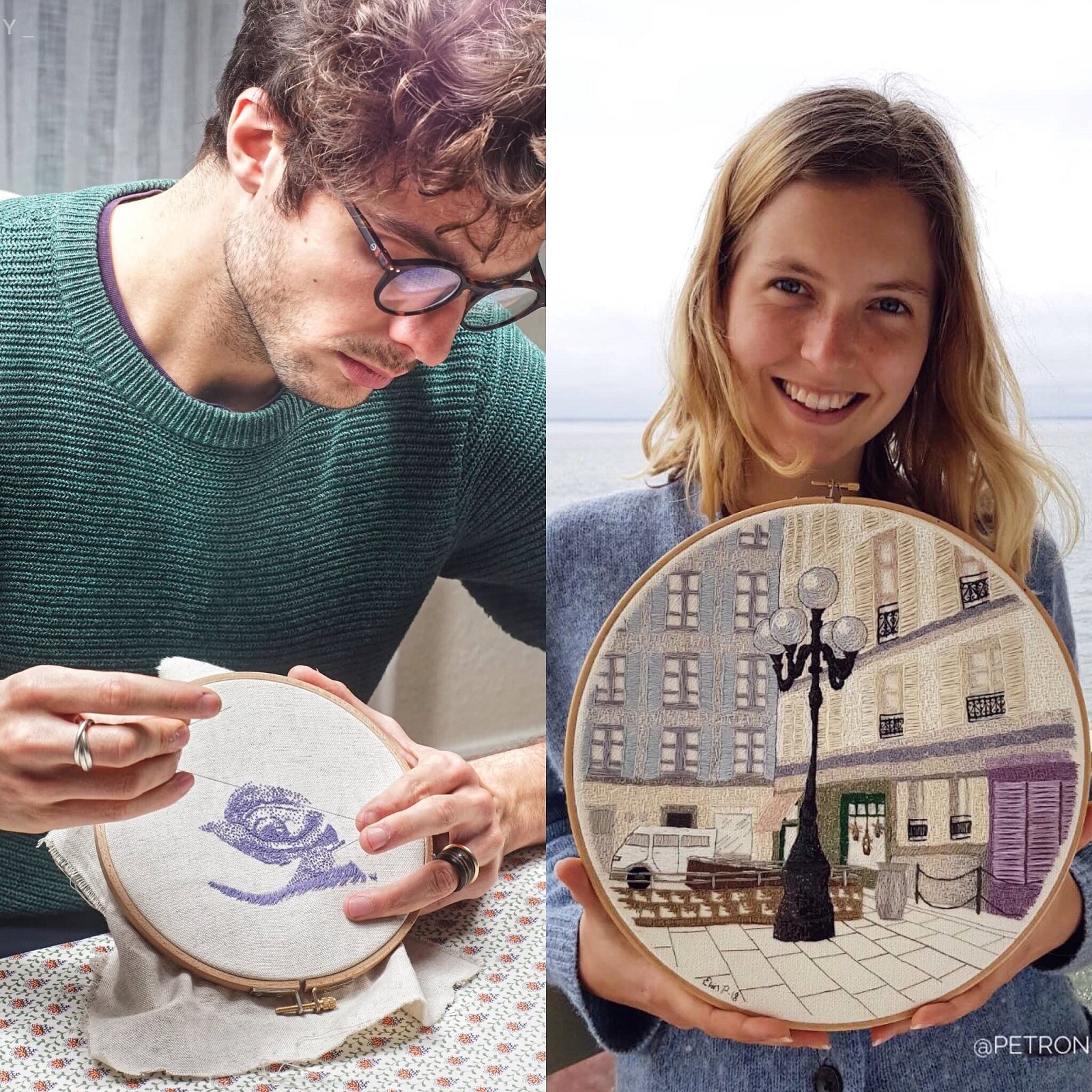
Tactile drawings
How did you first learn to embroider Elin?
Elin Petronella: I learnt how to embroider at home when I was younger. My mother is a seamstress, so I would make my own clothes, bags and other accessories too. But, growing up, I was more drawn to painting and drawing. I also had a period of scrap-booking. It wasn’t until I encountered the freer modern embroidery that my interest for the medium returned, as I now consider my embroideries ‘tactile drawings’.
I got my first commission before having any social media. I used to stitch every day at university in Paris. Then, one day a guy in my class asked me if I could embroider a lion on the back of his jeans jacket. I said yes if he would pay me (ha ha!), and he did. In return he requested that I start an Instagram account so that he could track the progress of the work, and that was the reason I started @petronella.art. That was in September 2016, and I honestly had no intention or interest in social media at all before that. Little did I know that it was the beginning of a transformation into a fully fledged business.
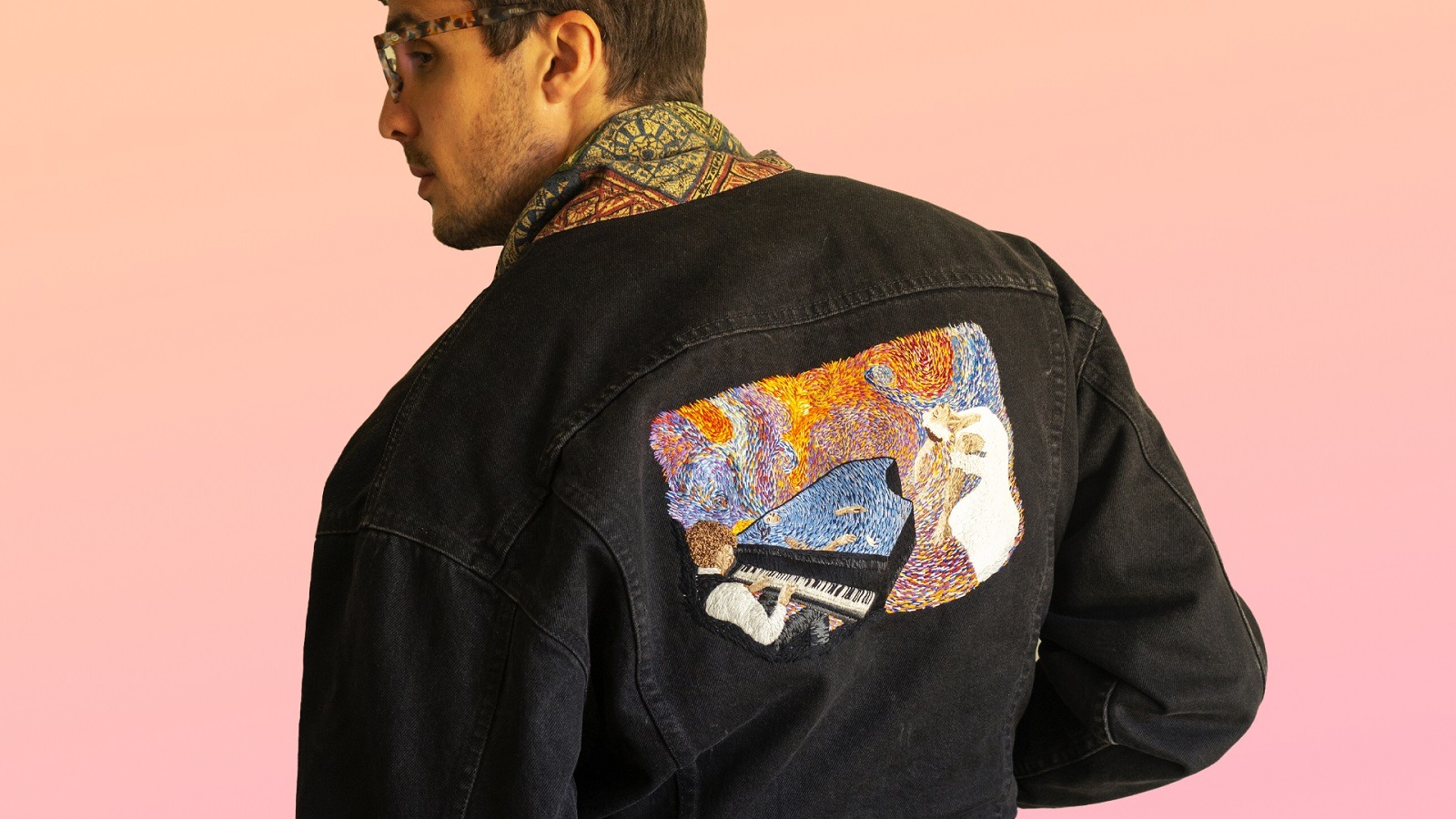
What was it like teaching Charles to embroider and how did that develop?
I taught Charles how to embroider when we met in 2016. Since the day we met we realised we both share the same passion for the arts. Charles had gone through art school in high school and had studied fine art at Beaux Arts de Paris university, whereas I had been a dedicated home artist having done various arts every day for most of my life. We met when I had just fallen back in love with embroidery and was working on my lion jeans jacket commission. As Charles saw me stitching all day and night, it sparked his interest to transfer his drawings to thread.
Charles was really excited to start, because he felt like he was doing something very unique and special in the beginning… until he realised just how many millions of other people also embroider! But if you’ve never encountered it before, you have no idea how big it actually is. The fact that he didn’t know anything about embroidery, prior to learning with me, allowed him to have an open mind with regards to how you can actually use the stitches, and that made it very fun. But it was the actual process of stitching, and how it helped him to deal with the anxiety that he was experiencing at that time, that really got him hooked and passionate about spreading the word about the medium.
Charles wanted others to also experience the feeling of soothing calm and joyful creativity while stitching.
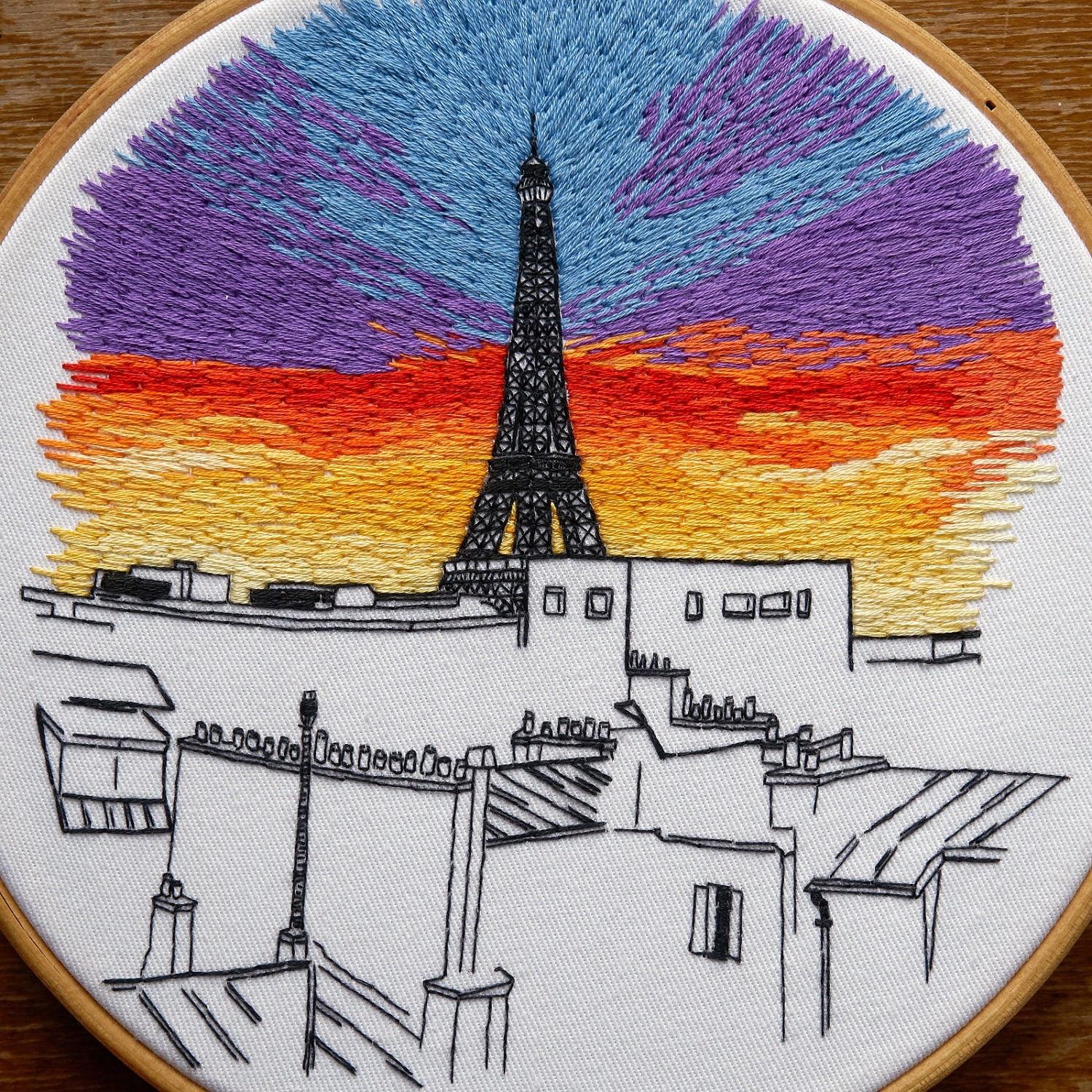
Embroidering Paris together
Can you tell us how you came to be so interested in architecture?
It was Charles who first encouraged me to embroider my architectural sketches of Paris, which are the embroideries that went viral back in early 2017. So even though I taught him the basics in embroidery techniques, Charles brought a new eye to how we could develop our styles and take modern hand embroidery to another level by creating ‘tactile drawings’.
Neither of us had studied architecture at university: it really came from the heart. Growing up in Paris, Charles always had an eye for beautiful buildings and loved to stroll through the city admiring them at all hours of the day (we spent countless hours just walking around).
My passion stems from my interest in history. When I moved to Paris it was as if each building spoke to me and I couldn’t help but imagine what all these walls had seen and heard. Naturally, there were also the graphical and beautiful elements that inspired me to turn them into sketches.
As we started to travel, we enjoyed getting to know places culturally, historically and socially. Architecture tells you so much about a place. Having decided to specialise in architectural embroidery, it made sense to combine it with travel as part of our everyday life.
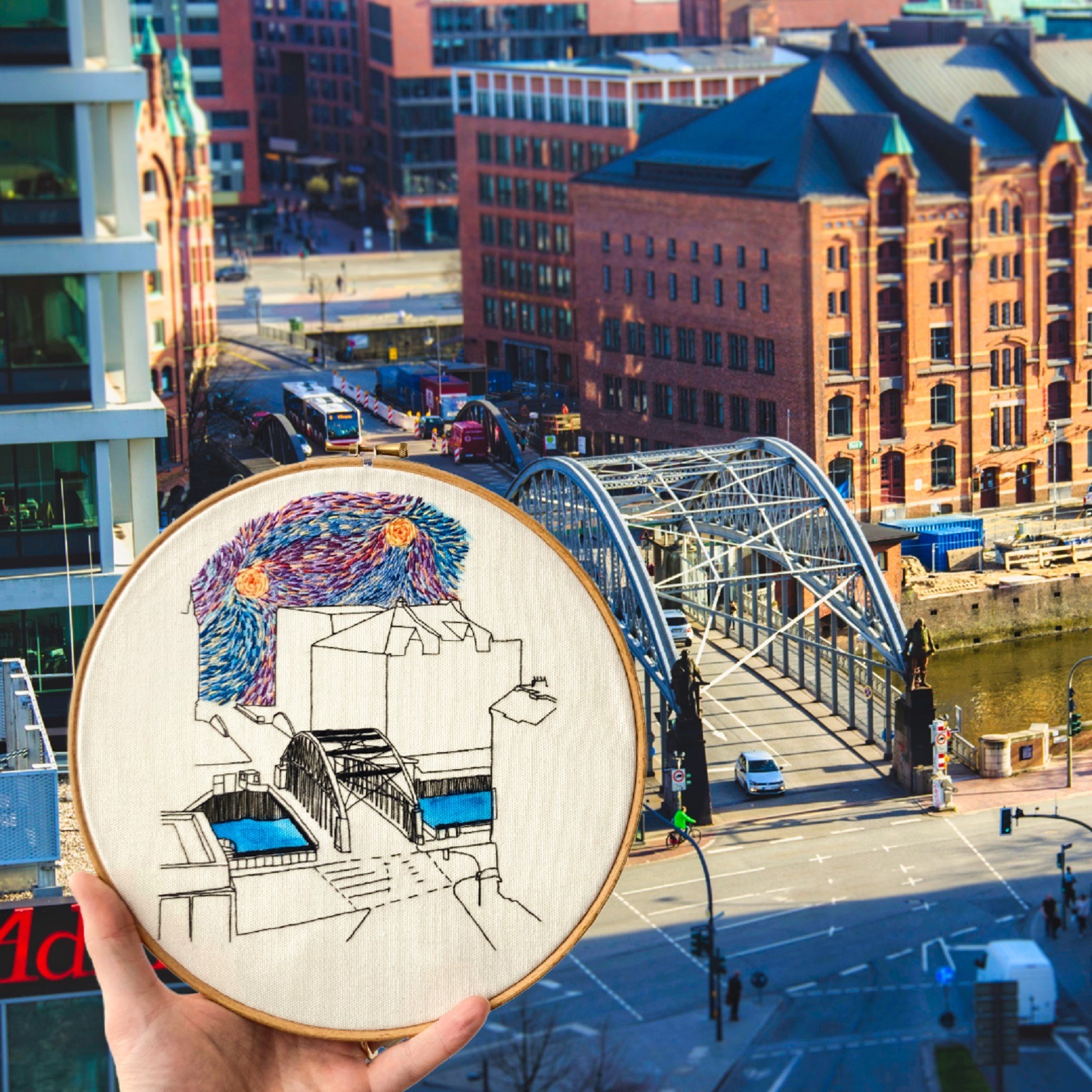
What is it that you love most about modern hand embroidery?
Hand embroidery is inherently relaxing: you can feel the fibres in your hands and watch your artwork grow as you stitch.
In our stressed societies today it’s easy to become disconnected. Embroidery is a process that grounds you and allows you to reconnect with yourself. And when you meet and embroider with friends you can chat and create at the same time, triggering happiness hormones on all counts!
We enjoy the satisfaction of creating something and, unlike cross-stitch for example, with modern embroidery you don’t have to count. It’s all visually based, which allows you to be more relaxed in your movements and not to worry about making ‘mistakes’ – because there are no mistakes!
We consider our fellow creatives and students as companions rather than competitors. In the arts it’s easy for many to feel protective or secretive over their techniques, but we decided early on that we value the shared moments more, as the learning always works both ways.
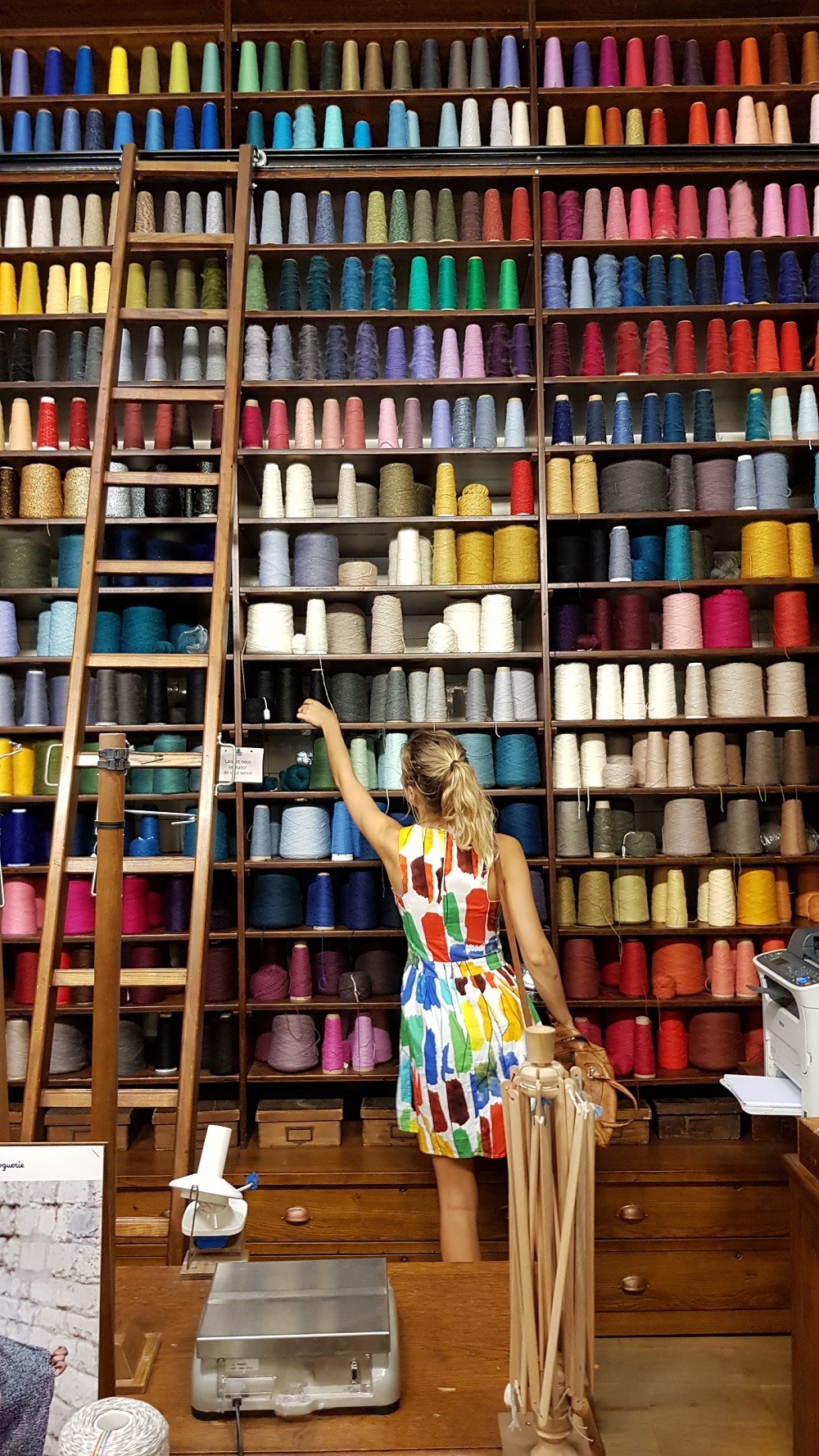
Can you tell us about your process from conception to completion?
The creative process can look different for each piece depending on when and where it is. If we have the opportunity to sketch a street scene or building in situ, then that is always our preference for the sake of the creative experience. But, in general, most work originates from a photograph. We always have our phones to take pictures whenever we are out, regardless of whether it’s in the neighbourhood at home or on a trip – you never know when inspiration will strike.
We then interpret the photograph as a sketch. The sketching process always takes place: it’s just a matter of whether it’s from a photo or live. The actual stitching is the same as with the sketching – if we can do it outdoors, that’s always fantastic.
The benefit with embroidery is its portability, so we often bring it with us (if it’s a smaller piece) to work a little outside and a little inside. We do have a dedicated studio now, but the embroidery still tends to be made all over the house!
We generally stitch on cotton canvas, especially for all the architectural scenes, and we’ve got a big stash of DMC cotton floss, which has become our main floss. I could talk about choosing colours for ages, but, in general, we like to use a base colour (often black, grey or brown) for the main structures of the architectural scenes and then either a highlight (eg a bright red door), and/or some greenery. For the greenery it’s nice to use at least two different shades, preferably three to add more life and depth.
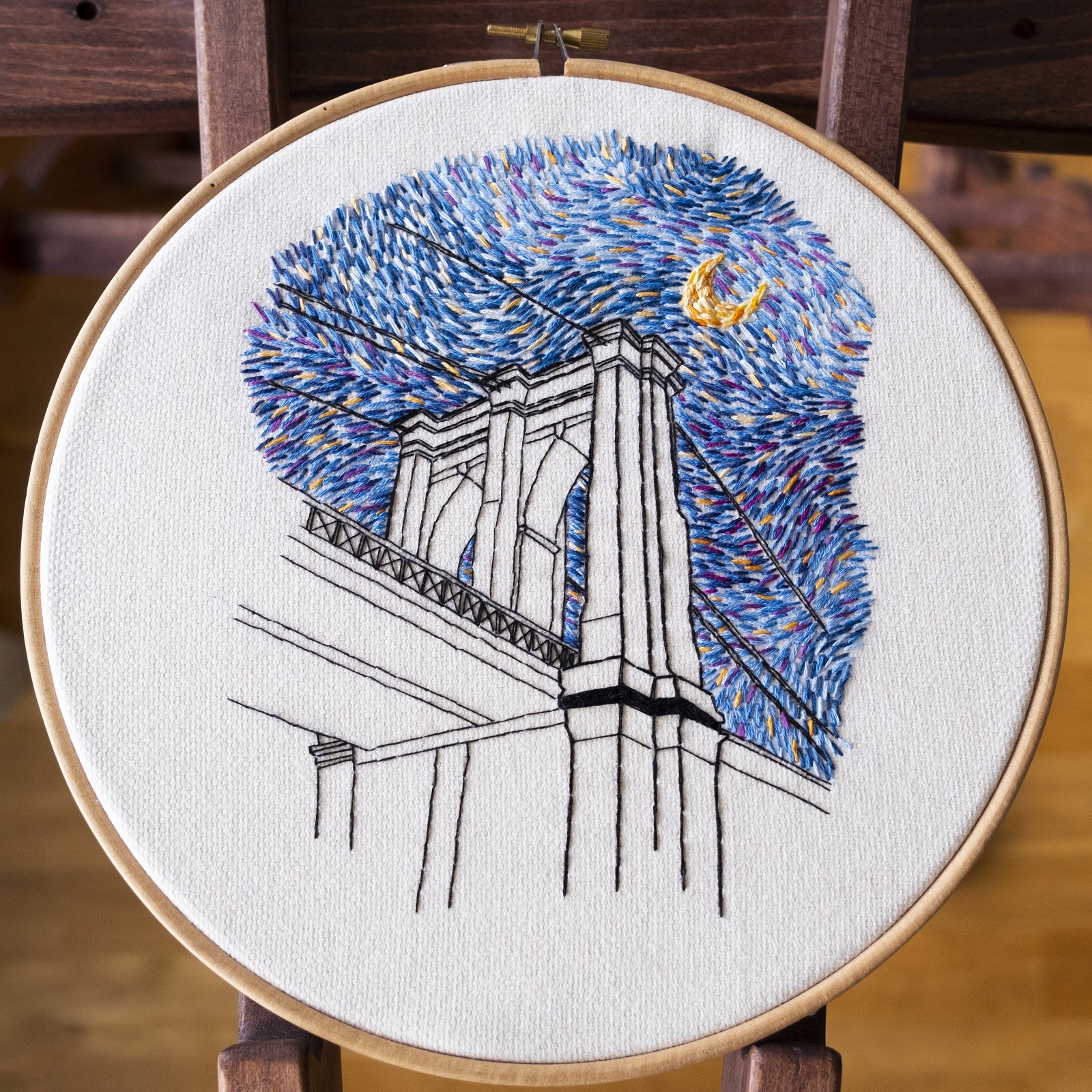
Everything’s better when shared
Tell us a bit more about your embroidery courses
It all started in 2017 when we got requests from followers on Instagram to share how we made our architectural designs. As I had done many years of teaching in sports, and always loved it, it came naturally to me to start offering workshops. Living in Paris at the time, there were always people coming through and, at one point, we hosted workshops almost every weekend.
As our influence and work continued to expand, we got increasing requests from people who weren’t able to make it to Paris to join our live workshops. That’s when we decided to film them and make them available for everyone, regardless of geographical location. Referring back to our company statements of ‘everything is better when shared’, we truly believe that sharing what you know connects you with people.
We were offered the chance to work with various video platforms quite early on, but we decided to cut out the middleman. We felt that following predetermined scripts from other platforms would block our creativity and limit our ways of connecting with people.
Since the beginning, we have worked hard to make authentic and intimate courses where we invite the students to be a close part of the project. We film a lot of closeups and go in-depth on all the little details, focusing on both the how AND the why behind the artistic embroidery decisions. That way the people who go through our classes feel empowered that they can do it themselves in future projects.
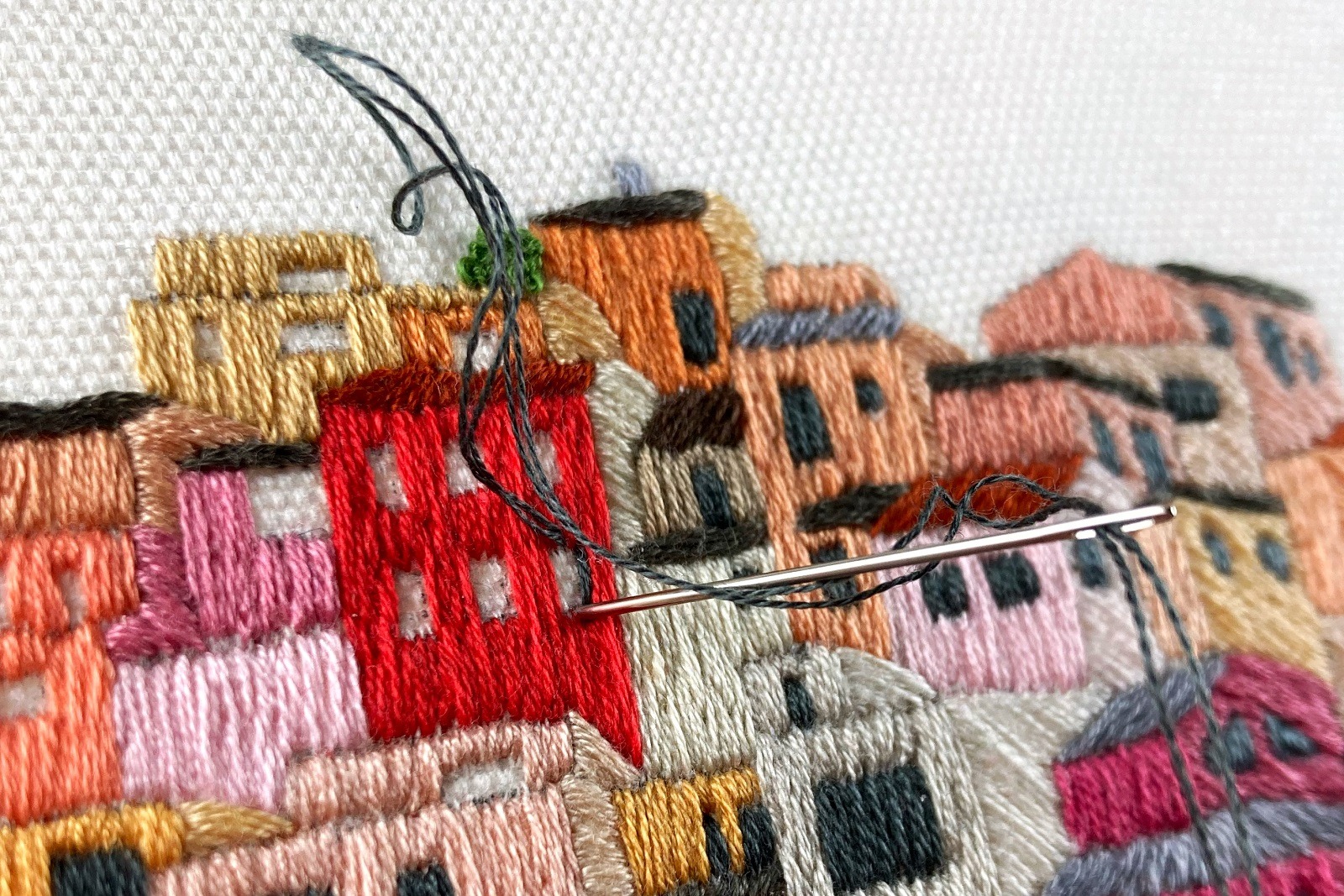
Most of our classes include a project that we work on as a practical exercise, as we believe in ‘learning by doing’. It allows those who feel that it looks very advanced to see that they can actually achieve something really beautiful, regardless of their previous experience, and hang up the finished embroidery on their wall as proof of their efforts.
Creating the Charles and Elin Academy, and keeping it an authentic experience directly between us and fellow creatives, was the best decision we ever made. It has brought us so much closer to our students and many return for each new course we put on.
Our wish is to make it possible for more people to join the movement of modern hand embroidery and to experience the creative stimulation and relaxation that it brings.
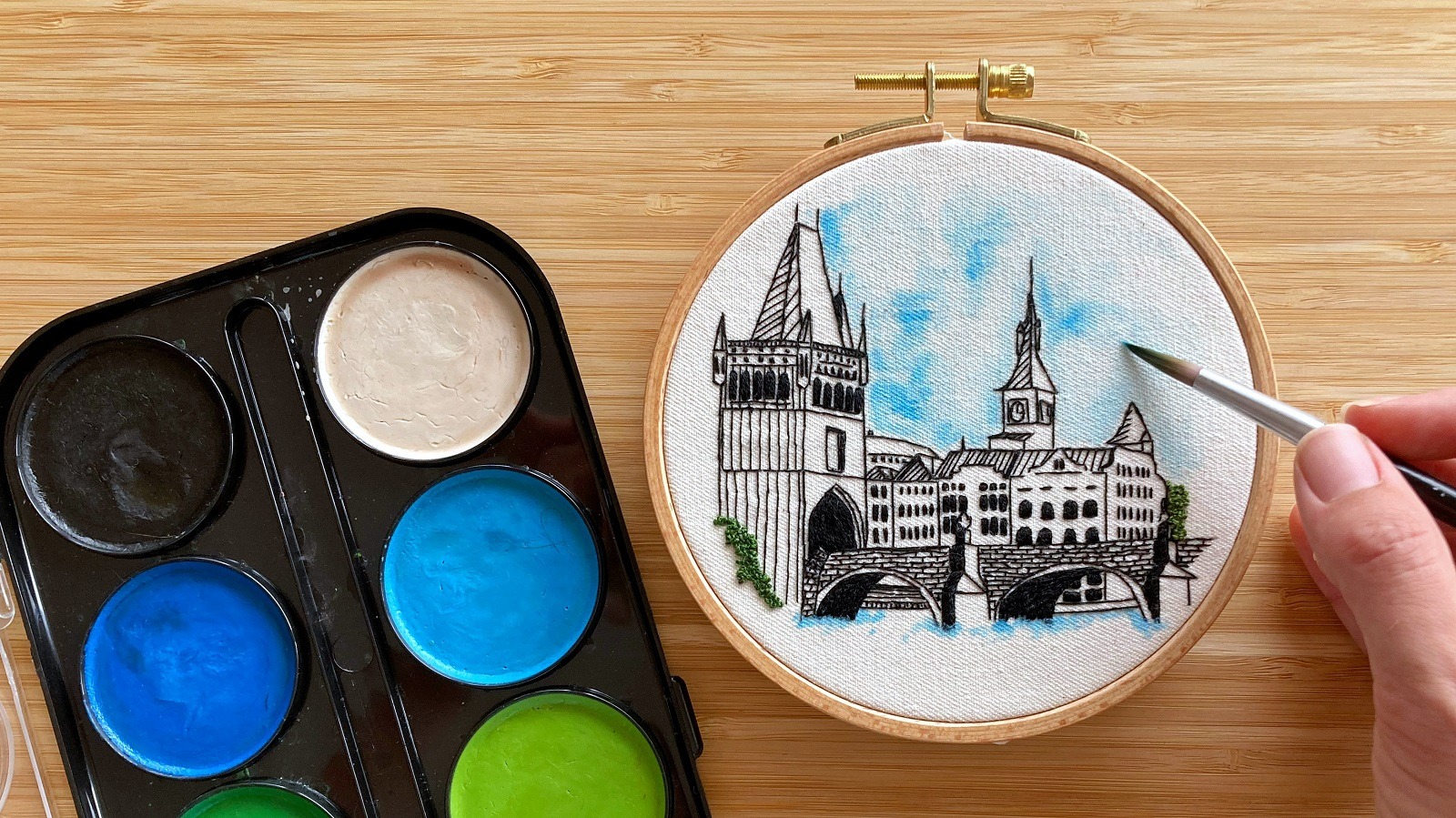
New country, new projects
What are your plans for the future?
The last couple of years have brought about a lot of reflection and we felt a growing urge to explore once again. We had spent three years in Sweden and became first-time parents in 2020. So in March 2022 we relocated to Montenegro. As creatives and explorers at heart we didn’t want to limit our vision for our family and work and so we made the jump! We chose Montenegro for its stunning beauty and inviting culture, which we think will provide lots of inspiration for upcoming projects – plus it’s close to incredible places in Europe where we can expand our horizons.
With regard to our embroideries, Charles is finding it creatively stimulating to experiment with tulle embroidery at the moment and has done many different styles. And I love to embroider on my clothes whatever comes to heart.

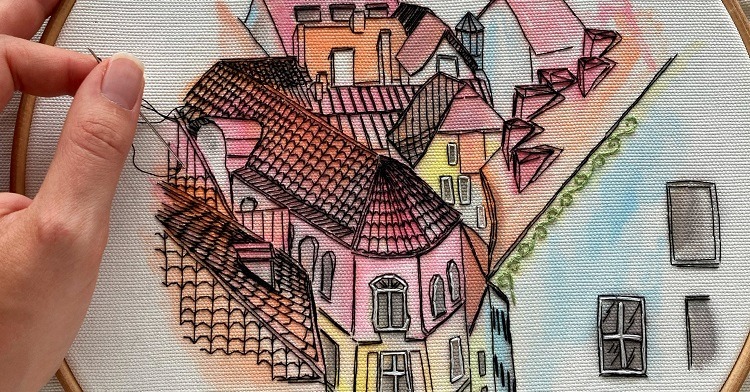

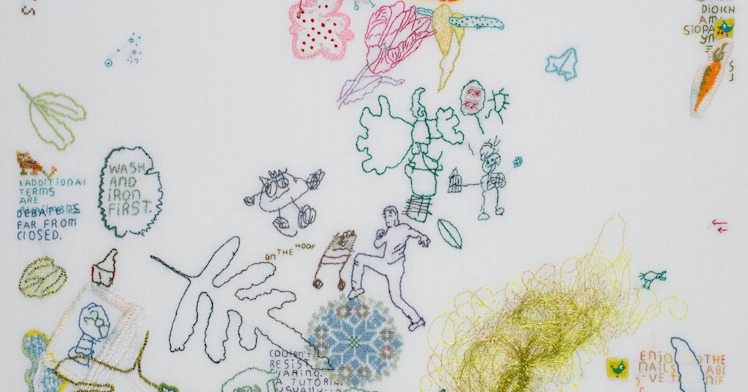
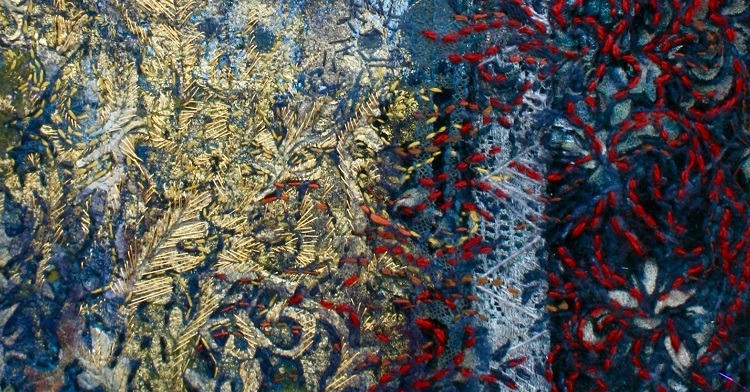
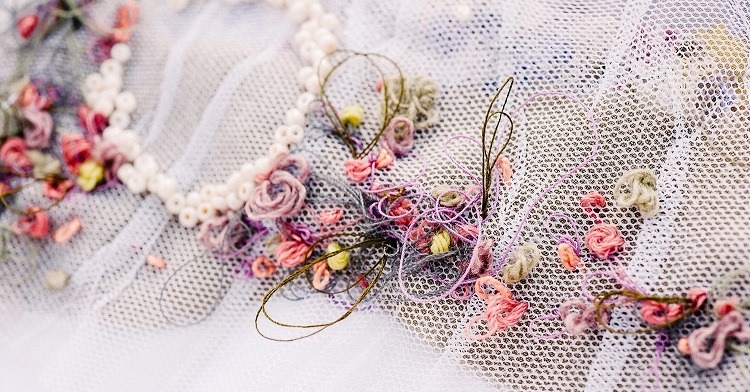
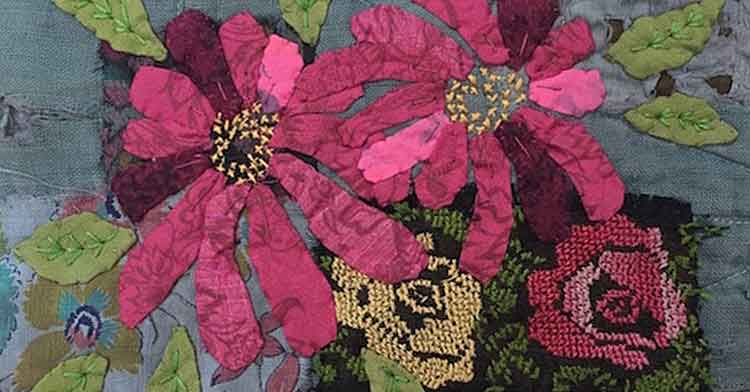
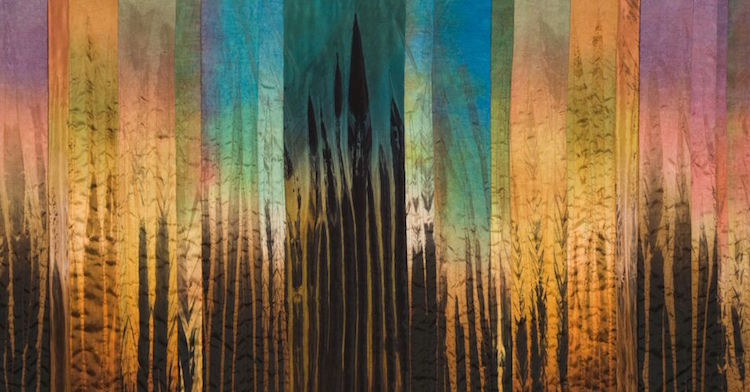
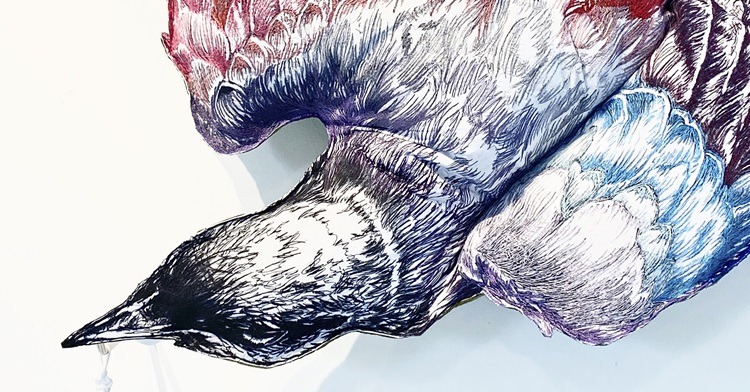
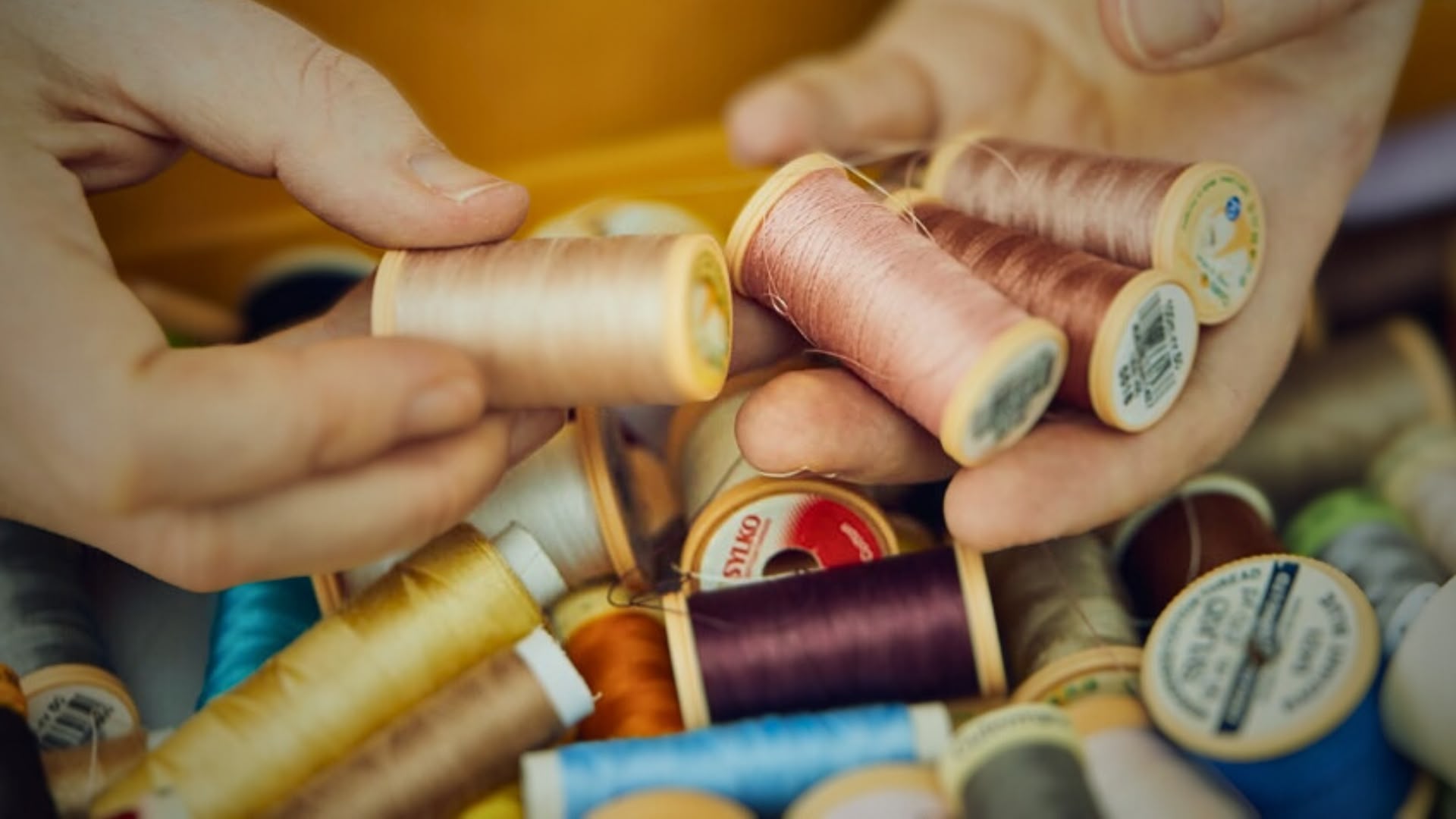
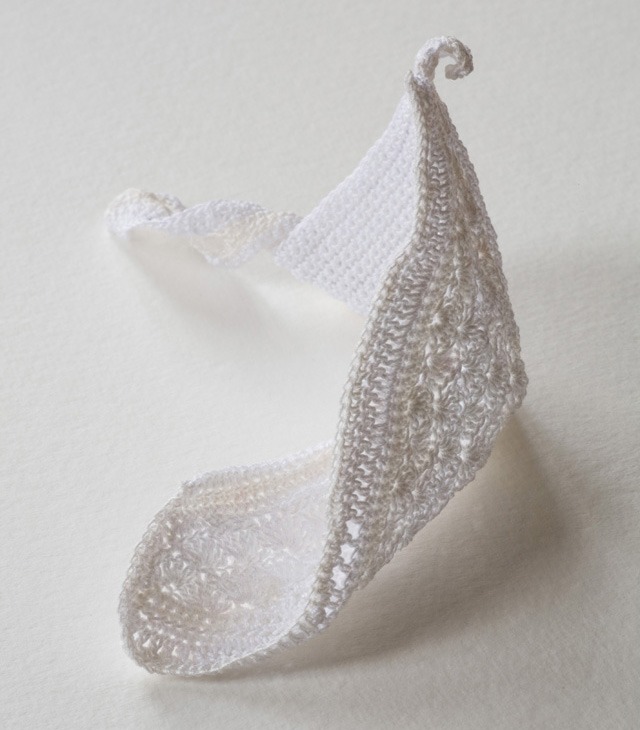
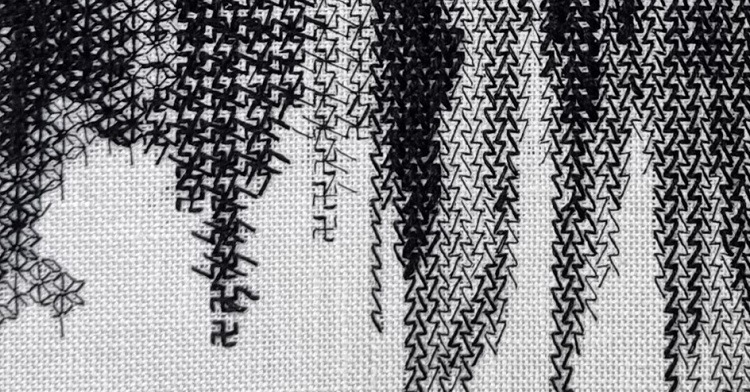
1 comment
Leonor Beatriz Villarruel
Soy bordadora a mano sobre telas y papel también dibujo y pinto.
Disfruté la historia de Elin y Charles, los admiro.
Soy de Argentina, tengo 69 años, abuela de 2 nietas y lamentablemente no hablo ni escribo inglés…los traductores me ayudan.
Soy feliz bordando mis hebras!!